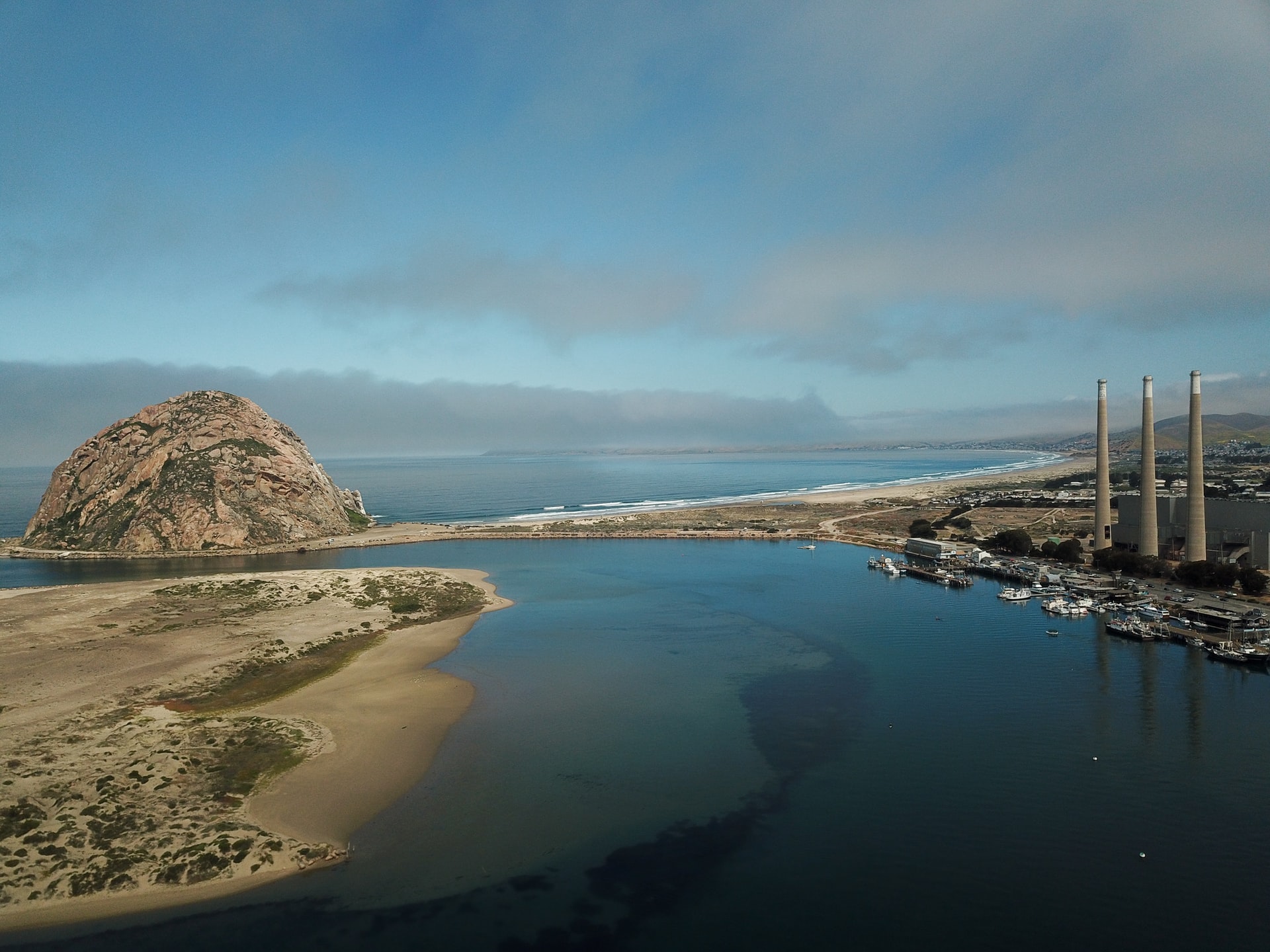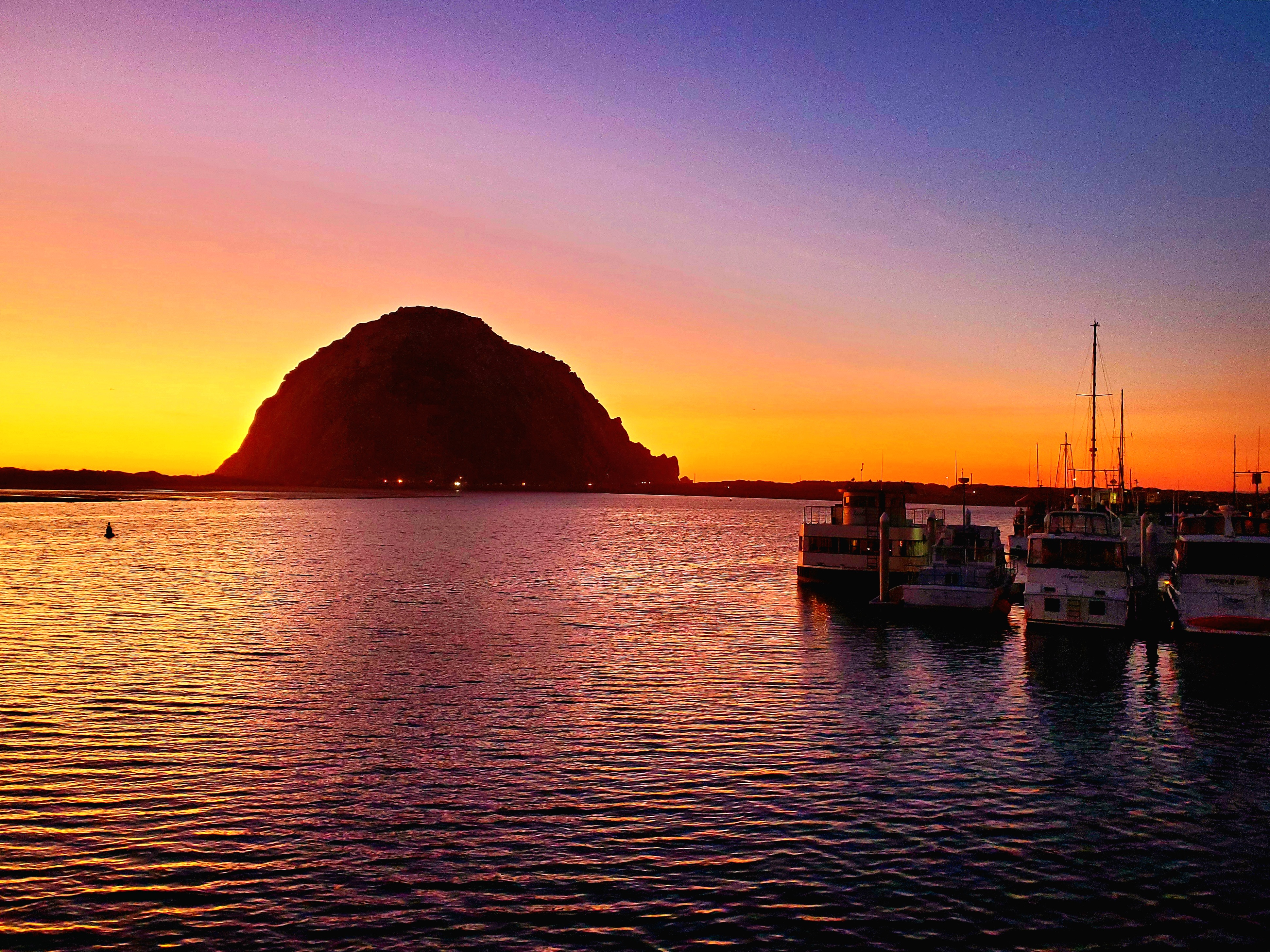
California's Central Coast, a 200-mile stretch of shore between Santa Barbara and Big Sur, is one of the Golden State’s quieter hidden gems. Among the region’s must-visits is Morro Bay, a town of about 11,000 people that’s home to calm waters for kayaking, seals and sea otters, seafood shacks, and the eye-catching Morro Rock. The town also hosts what was once a massive power plant and its three towering stacks, which PG&E built in the 1950s.
For the vast majority of visitors to Morro Bay, which along with much of San Luis Obispo County ranks as a popular day and weekend trip for those seeking to escape the San Joaquin Valley’s scorching summer heat, the three 450-foot stacks elicit the thought, “Who thought it was a good idea to put this here?” Like most visitors, infrequent or (as with myself) quite frequent, the stacks are something not to post about on Instagram — I recently scrolled through my phone and yep, not a single photo of the stacks are in my gallery, as I’ve always noted to take selfies, pics of the dog staring at the seals, sunsets, and, of course, Morro Rock without the stacks in sight.
For locals, opinions about the power plant are a tad more nuanced. The stacks have been around so long that for many locals, they are an integral part of the town’s landscape. The old-timers who remember when the power plant was built note that the stacks indeed left Morro Bay stacked, as in flush with cash to buy new school desks or funds needed to keep the streets well-paved. Some residents just want the stacks to go. Nevertheless, observations of the swag sold in stores along the town’s Embarcadero, as well as the logos affixed on plenty of local storefronts, together show that the stacks for locals are more an important part of the town’s lore than a part of history that should be torn down.

In any event, the fate of the stacks is a sealed deal. The Morro Bay power plant has been largely shuttered for almost a decade, and last fall, the town’s council voted to tear down the stacks. Arguments over history or appearance were part of the discussion, but in the end the decision came down to finances: The cost to the town for maintaining the stacks could reach more than a million dollars a year. Do the math: Morro Bay’s annual budget is less than $16 million annually.
The city found a solution for its stacks dilemma in an agreement with Vistra, a power generation company that had agreed to buy the plant and will front the cost to remove the stacks. The company has plans to build what could become the world’s largest battery storage project, one with the capacity of as much as 600 MW of energy storage once it is completed. The first phase of the project is slated to switch on next year, though time is of the essence as California’s controversial Diablo Canyon nuclear power plant will be decommissioned during 2024 and 2025; in turn, California’s renewable power mandates will require more energy storage capacity, and the Morro Bay site is expected to help meet such demands.
As for the stacks, Vistra has agreed to front the costs and tear them down by 2028 or pay an additional $3 million as a fine.
Vistra has experience transforming California’s coastal power plants: The company has taken on a similar energy storage project on the site of a former power plant in Moss Landing, a fishing village on Monterey Bay about 140 miles north of Morro Bay.

Image credits: Katie Rodriguez via Unsplash; Michael Olsen via Unsplash; Leon Kaye

Leon Kaye has written for 3p since 2010 and become executive editor in 2018. His previous work includes writing for the Guardian as well as other online and print publications. In addition, he's worked in sales executive roles within technology and financial research companies, as well as for a public relations firm, for which he consulted with one of the globe’s leading sustainability initiatives. Currently living in Central California, he’s traveled to 70-plus countries and has lived and worked in South Korea, the United Arab Emirates and Uruguay.
Leon’s an alum of Fresno State, the University of Maryland, Baltimore County and the University of Southern California's Marshall Business School. He enjoys traveling abroad as well as exploring California’s Central Coast and the Sierra Nevadas.














